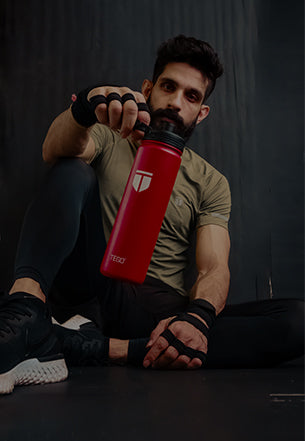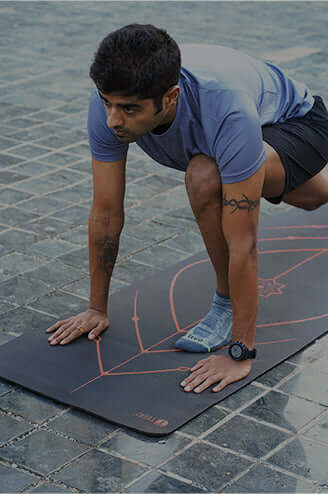The Shaolin Way ft. Harshh Verma

You set foot on the path of Shaolin culture after an injury. Tell us more about this switch from a professional footballer to a Shaolin warrior monk.
It was definitely a big switch, have always been an athlete, but post knee surgery the changes were drastic. More than physical, it was the mental transformation and spiritual growth which I felt closely on myself. Having said that, I evolved to be more resilient, the only person I was competing was myself and no one else.
Where is the Shaolin Temple located and what was your experience like there?
The Shaolin Temple is in the North-Central East of China, in Henan Province. You land in Zhengzhou city the capital and drive 2 hours towards a small town called Dengfeng City to reach the temple up on the mountain. My experience cannot be said in one or a few lines, not even one full page. But, to sum it up, it was exhilaratingly serene with a lot of battle everyday with myself to earn the title of becoming a warrior monk which was not planned. Hardwork, perseverance, discipline, time, efforts, honesty, loyalty, integrity and mainly compassion. Trained all day everyday!
Take us briefly through the teachings and principles of Shaolin.
Shaolin principles and teachings are very simple. The 3 main pillars are Zen Buddhism, Kung fu, Medicine. The fourth one recently added was Zen Archery. These comprise of deeper study and understanding through its philosophy, reason & practice. Every shaolin practitioner has been taught self cultivation and to protect onself and their loved ones. Through having compassion based approach where it’s complimenting your discipline is the basic adaptation through the lifestyle practice of shaolin.
What have been your learnings along the way since you were imbibed at the Shaolin Temple as a warrior monk?

I mainly learned to be a good listener, because a good student is a good listener. Apart from this, for me commitment to an art and to myself to acquire to complete tasks, being hungrier for knowledge, making most of the beautiful linear concept called “time”. Being helpful to others as I was also translating from mandarin to English/Hindi/Spanish for the temple. Awareness of breath and knowing how to increase the conscious level of one self. And many more...
What all were you engaged in during this period of learning the principles of Shaolin?
I was involved and given duty of a warrior monk after completing one and a half year. I was precisely learning the culture as a whole which includes the 4 pillars of shaolin culture. Basic duties at the dining hall, in and around the different structures of the temple and mainly our dormitory and training hall. Our main was also to spread the culture to travel around the world for shows. And many more occasions, ceremonies and festivals required our service as the temple is our home.
What was the most challenging part of your journey to becoming a Shaolin warrior monk?
To be honest I had no intention of becoming a shaolin warrior monk. After completing 1 and a half year, I was leaving the temple as my savings finished. At that time, I was offered to become an integral part of the temple which required me to take basic vows and oaths of a shaolin warrior monk. This was a huge step as it was the first time for the temple and an Indian to have gotten this opportunity. The most challenging was to keep up with my monk brothers and the accepting me as their own, but I was confident about my hardwork which got me lot of appreciation and respect. Mainly, my intention was right; everything else fell in place after.
Tell us more about your academy and what inspired you to start it upon your return? When did you launch the academy?
My academy is a direct branch / affiliation of the shaolin temple china. It’s me carrying all the 4 pillars of the shaolin culture. Every country has a cultural center; India’s cultural Centre’s responsibility was given to me as I studied everything in mandarin. I opened this as I want to revive India’s lost culture. Not many know, but this is given to china by an indian eminent monk named bodhidharma from south india. I just want to help people better their lifestyle and know that our culture is diamond and not let it fade away or forget about it. Just to inspire as many people I can. This is my purpose. We started in 2021 July-August, JUHU area, Mumbai City, India.
What’s your daily training regime like?
I now train for about 3-4 hours a day. In the temple we did our routine training for 8-10 hours a day. But when you run a school and teach students it takes up your time. Doing cardio and followed with flexibility training with kicks, punches, shaolin drills and fist forms, weapons and breathing and meditation. Right nutrition, rest and mental clarity are very important in your progress of training. As you train your mind, your body follows.
At TEGO, we are in constant pursuit of finding ways to evolve and be better than yesterday. How do you keep yourself on the path to constantly improving and evolving?
I personally don’t believe in physical judging at the primary front, first is technique and once you get that repetition is the key to progress. Last, my shifu always said its always in the feeling of the movement, if you don’t feel it and go in depth of understanding you’ll never know if you’re doing it right or not. So practice diligently for yourself and don’t let your self-esteem be driven by opinion of others. This is my way of the warrior!
What is the ideal exercise routine you’d recommend for the everyday athlete?
I recommend inculcating breathing exercises for every athlete as that’s the most crucial element for progress of every athlete. With lot of sweating, flexibility, core work and end it with meditation to reflect upon your practice and become a better version of yourself from a day before. Always!







